Table of Contents
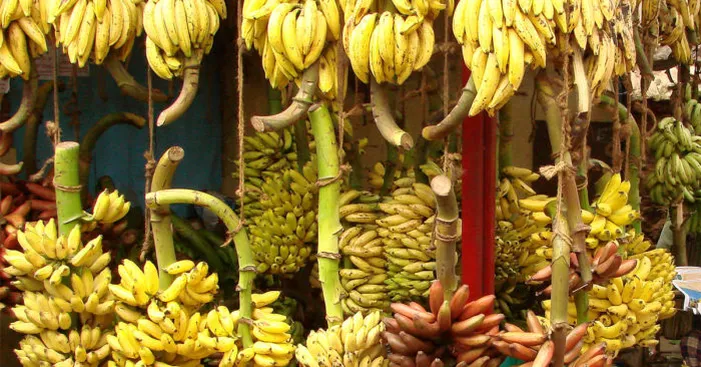
If you thought that all bananas were the same, think again!
There is many banana varieties from around the world that offer different flavors, textures, and nutrition.
From the sweet and creamy Cavendish to the blue and red bananas, the different types of bananas offer a range of flavors and experiences.
In this blog post, we will explore the different types of bananas their characteristics and unique flavors.
Get ready to explore the wonderful world of bananas!
Origin of bananas:
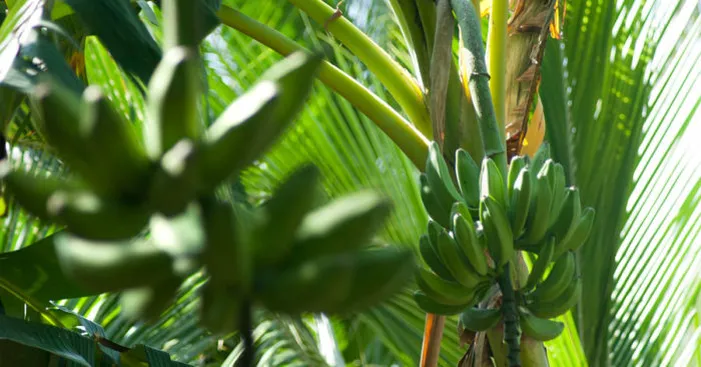
This fruit was first cultivated in the Indo-Malaysian region, and it slowly reached Australia.
Due to the diversity of cultures that inherited banana farming, this fruit has many alternative names including Plaintain, Canbur, Bananier Nain, and Curro.
The first time this fruit was mentioned, was in the Buddhist books around 600 BC. (1)
Then in 327 BC, after conquering most of India, Alexander the Great brought bananas to Ancient Greece, where it was planted, and although many believe that, the very first plantations were first planted in China way back in 200 AD!
The recognition of bananas in the Middle East started with the Islamic Conquerors, and later on Arabs introduced the fruit to Africa.
The word “Banana” is proven to be of a West African origin!
Several years later, banana cultivation reached all the continents thanks to Portuguese colonists.
They were the very first ones who started plantations in the Atlantic Islands, Western Africa, and Brazil.
Sadly for Europeans, bananas were only known during the Victorian Era through merchant trade, almost a thousand years after the African recognition of the fruit.
Finally, after several years of trading, Europeans started planting their Bananas.
Banana varieties:
Bananas are so famous throughout the world.
Actually, 100 billion bananas are consumed every year! (No wonder why they are so popular).
In 2019, Americans ate an average of 28 pounds per person, crazy right?! (2)
Another mind-blowing fact about bananas is that there are 1000 types throughout the world. (3)
Due to that huge variety, I decided to include the 6 most famous bananas.
Since many types of bananas are not available in some places, I based my choice on the types that most likely, you will find in your local grocery store.
Cavendish bananas:

This one is the one that you picture in your head, when you first think about bananas, the yellow bent shape with the classic banana flavor, along with the white creamy texture, yum!
That’s the Cavendish Banana. It’s the most common as it holds the first place in both:
- Production number compared to other types. 5 in 10 bananas produced are Cavendish.
- Most exported types with over 90% of all exported bananas.
An average Cavendish banana can reach lengths of 6 inches (15cm).
The main producers of this banana variety are India, Ecuador and China with more than 41% of the global production of cavendish bananas. (4)
This type of banana gained its name from the “Dwarf Cavendish” which is a similar cultivar in the same group.
Dwarf Cavendish was the first cultivars developed for commercial exploitation at the time of the 6th Duke of Devonshire: William Cavendish. (5)
Once it ripens, the peel of the Cavendish banana turns brown and the insides become mushy and the starch content turns into sugar making it sweeter.
It is beyond imagination just think about it: a fruit that continues ripening even after being detached from its mother plant!
It should be noted, that Cavendish bananas go through 2 stages of maturity:
- They grow in the tree until they reach the size of maturity (6inches).
- After being picked, they continue ripening and turn yellow.
In the market, you can find this banana variety in all of its states of maturity: green, light green, and yellow.
The uses of Cavendish bananas are the classical banana recipes we all know from smoothies to juices and waffles.
Unfortunately, this type of banana is endangered by a soil-based disease called Panama Disease. (6)
Red bananas:

When you first see this type, you can’t help but thinking “it’s photo-shoped”. Well, it’s NOT!
They usually have a pink peel and a very sweet raspberry flavor, interesting Right!
Even though red bananas are fairly rare, they are much richer in Potassium and Vitamin C, more than the classic yellow ones (Cavendish).
The color of a red banana is mostly due to its high content in beta-carotene, the same beneficial antioxidant pigment responsible for carrots color.
As for the shape of this banana variety, it is much shorter than the traditional Cavendish bananas but the fruit inside is thicker.
A sign of maturity of red bananas is when small black dots start appearing on their reddish peel.
When they fully ripen they tend to have a very soft texture that makes them more suitable as a snack rather than a food ingredient.
The main producers of red bananas are Asia and Central America where in some places people call it “Jamaican bananas”.
Even though most people like to eat red bananas raw for their sweet delicious taste, this type of bananas is used in many dessert recipes.
Small bananas:

Small bananas AKA Lady’s Finger bananas earned that name because of their small size compared to the Cavendish.
They are 3 inches in size with a creamy honey flavor.
Most parents choose this type of banana for their kids, as it makes a well portioned and easy snack.
Once they ripen, Lady’s finger bananas tend to have the classical delicious banana flavor and bright yellow color with black spots.
Blue Java bananas:
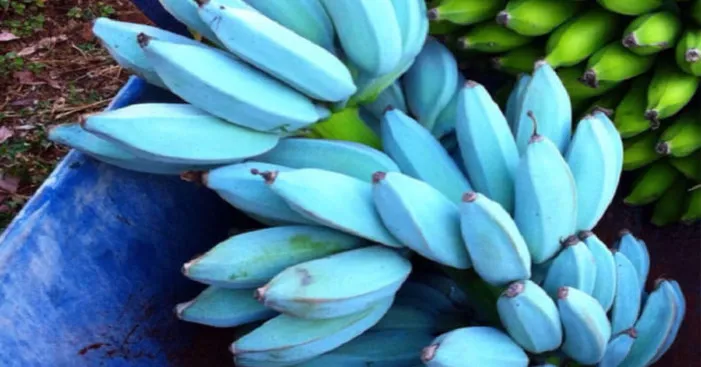
Now I know what you’re thinking, there is such a thing as blue bananas?!
I know it sounds crazy, but it is true! Who knew that bananas come in all kinds of colors.
This banana variety develops this astonishing blue color when they begin to ripen.
Unlike other types, Blue Javas can grow in cold weather due to their high wind resistance.
Blue java bananas, also known as “ice cream” bananas, not only for withstanding the cold but also for their sweet vanilla flavor.
One of the signs of maturity of Ice-cream bananas is that the blue color gets paler as it ripens.
People like to eat blue java bananas raw or use them in juices and many pastry recipes instead of regular ones.
Buro bananas:
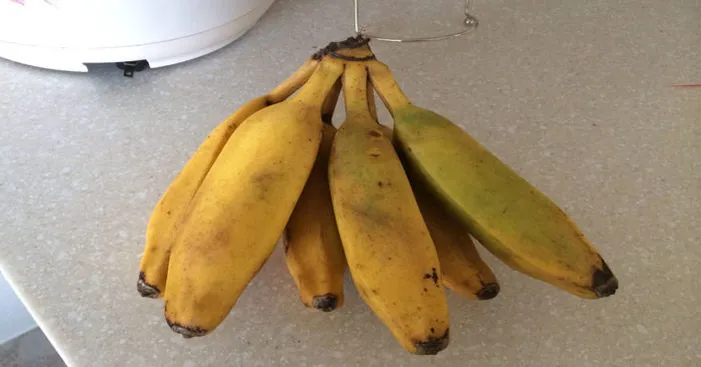
Also known as Horse, Orinoco, and Hog bananas.
High in magnesium, potassium, fiber, as well as Vitamin B and C, this type is very nutritious as an ingredient or when they are raw.
When it ripens, it has a unique lemony flavor that sets them apart from the classic banana flavor.
Burro bananas can resist cold and wind, however, they may need assistance once the fruits get larger.
Among the unique characteristics of buro bananas, is their incredible resistance against diseases including “Panama disease”.
In Burma, people like to eat buro bananas raw, on the other hand, people in Asia and Africa like to use them in cooking recipes
Plantain bananas:
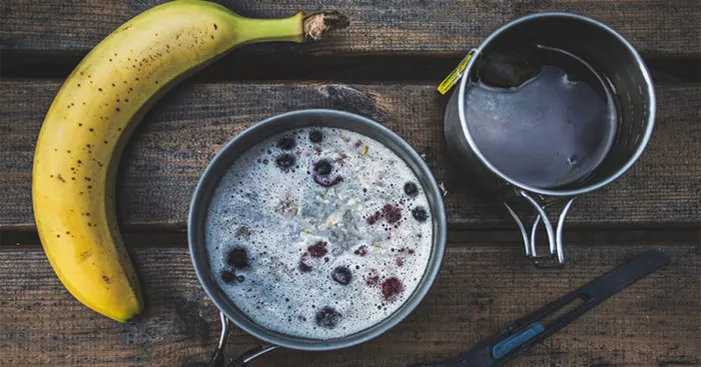
Widely known as the “Cooking Bananas”, this type contains more starch than sugar, which is why they are perfect for usage in the kitchen.
Because of that, almost all banana baking and cooking recipes across the world use plantain bananas.
The sugar content of plantain bananas doesn’t give it a very pronounced taste just enough to give the dish a banana flavor.
Plantain bananas usually have a very pale yellow color which is a sign of maturity.
When this fruit is perfectly ripe, the peel tends to have black spots and sometimes even long black lines across its length.
In addition, plantain bananas are very famous in the USA only second to Cavendish bananas.
In fact, Plantain bananas grow in Florida where is the most popular banana variety in the market.
Since plantain bananas grow in many regions around the world, they have many different names including:
- Plantain in Africa.
- Banana flour in India.
- Cooking bananas internationally.
- Banana point in New Caledonia
However, it is not as easy to peel which is why you must boil it in saltwater, then peel it and fry or use it in stews just like potatoes.
Ripened Plantain bananas tend to caramelize when they’re fried.
You can also bake them, microwave them, grill them, or boiled them either peeled or unpeeled.
Big Mike (Gros Michel):
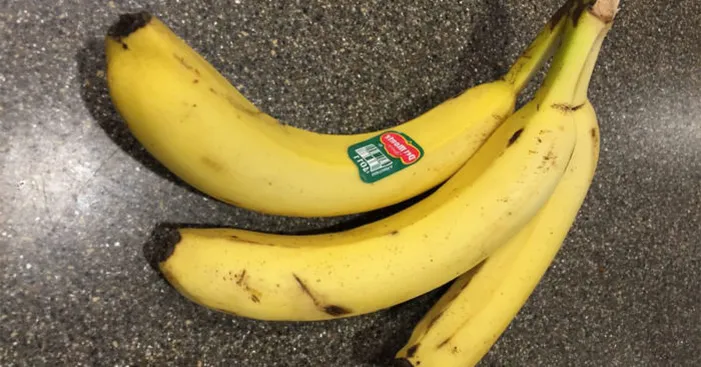
Big used to be the most famous banana variety in the last century but in the 1950s it almost went extinct because of Panama disease.
Luckily, the world is big and when this disease hit Big mike’s bananas in the Americas it didn’t affect Big Mikes that grew in Uganda where they call it “Bogota”.
Some people argue that the taste of Big Mike is much sweeter than nowadays most common banana variety (Cavendish).
This statement may in fact be incorrect as several tasting studies shows no result of people favoring Bik Mikes over Cavendish.
Instead, most people claimed that the taste of these two banana varieties is very similar.
Manzano bananas :
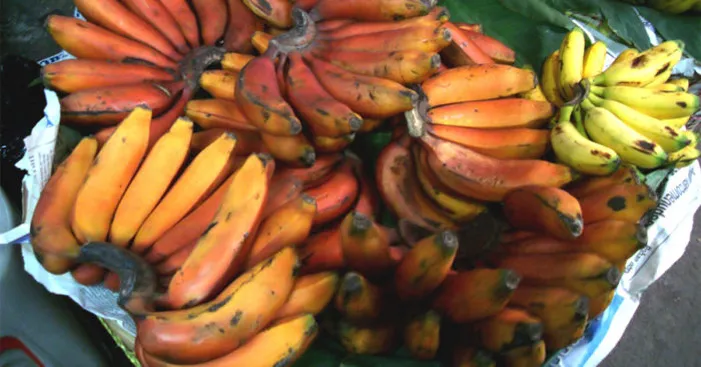
This next banana variety goes by other names including “apple banana” due to its bulb thickness.
Also because when they are ripe they tend to have a distinguishing smell that resembles sour apples.
As for the taste, it has a very mild banana flavor that is refreshing and perfect for people who don’t like overly sweet fruits.
The texture of a Manzano banana is kind of different from Cavendish (classical banana) as it is a little drier.
The main producers of Manzano bananas are Central America, African and Asian countries.
Banana fig apple yellow:

People like to consume banana fig apple, AKA Adam’s fig, raw as it tastes very sweet and fruity with a soft inside.
Also, some people use it in different recipes such as cakes, jams, marmalades, and more…
In addition, people in India like to dry this banana variety to extend its lifespan and enjoy it throughout the year.
However, Banana fig apple yellow is very fragile and tends to spoil quickly therefore it is not that common in the Western world.
Lacatan or Lakatan banana:

The Lacatan banana (or Lakatan) grows mainly in the Philippines where they first originated.
With a lighter orange color compared to the Fe’i bananas, the lacatan bananas have more beta-carotene than other banana varieties.
In the Philippines, lacatan is the most consumed banana variety with more than 10% of the total banana market. (7)
When it comes to the flavor, this type of banana has a very pronounced banana flavor and people like to eat it raw or cooked.
Other banana varieties:
Golden fingers banana:
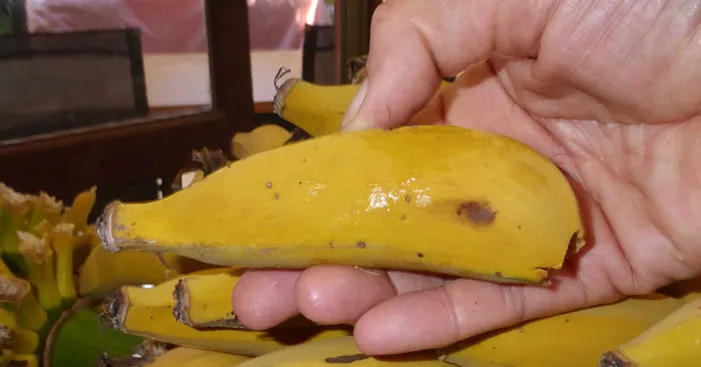
This banana variety is not very common and very rare to find in US grocery stores.
This cultivar is of Honduras origins and are basically a cross between Cavendish and Lady’s fingers.
The taste of this banana variety is sweet with apple flavor and it doesn’t turn brown after cutting it from the tree.
Praying hands banana:
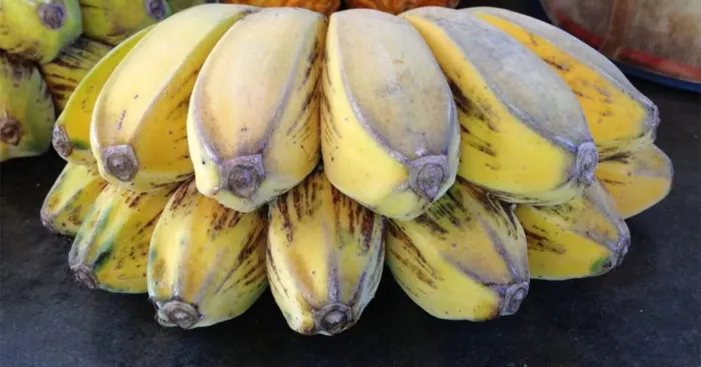
The praying hand banana is a very unusual variety and very hard to find in the Western world.
This variety is also of Indonesia origins and almost exclusively consumed in Asia.
In fact, this banana variety gained its name from its unusual shape which resembles two hands praying with 4 to 7 fruits each.
As for the taste, praying hands have a mild sweet taste and a very pronounced vanilla flavor.
Fe’I bananas:

The Fe’I bananas have a very distinguishing color as they are usually orange with red shades.
The inside of this banana variety is bright yellow and once you cut it the cross-section almost looks like sweet potatoes.
However, people don’t like to consume Fe’I bananas raw as they have low sugar and don’t taste as sweet as other bananas.
So most people Fe’I to use it in the kitchen in different recipes almost like plantain bananas.
Pisang Raja banana:
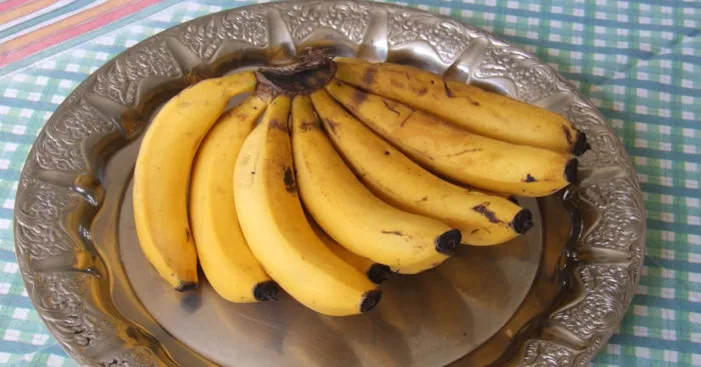
This banana variety is also of Indonesian origins and go by the name “Grindy” bananas in the western world.
In fact, these bananas are very small, with mature Pisang bananas almost the size of a finger.
They have a sweet taste and a very smooth texture that dissolves in the mouth.
Among the many famous Asian recipes that use Pisang Raja bananas, we find pancakes.
References:
(1): Bananas — History, Properties and Nutritional Value (scienceofcooking.com)
(2): • U.S. fresh bananas consumption per capita 2019 | Statista
(3): ALL ABOUT BANANAS.
(4): The World Banana Economy, 1985-2002 (fao.org)
(5): William Cavendish: Inventor of the Cavendish Banana – The Science Agriculture
(6): The imminent death of the Cavendish banana and why it affects us all – BBC News
(7): Philippines | Improving the understanding of banana (promusa.org)
